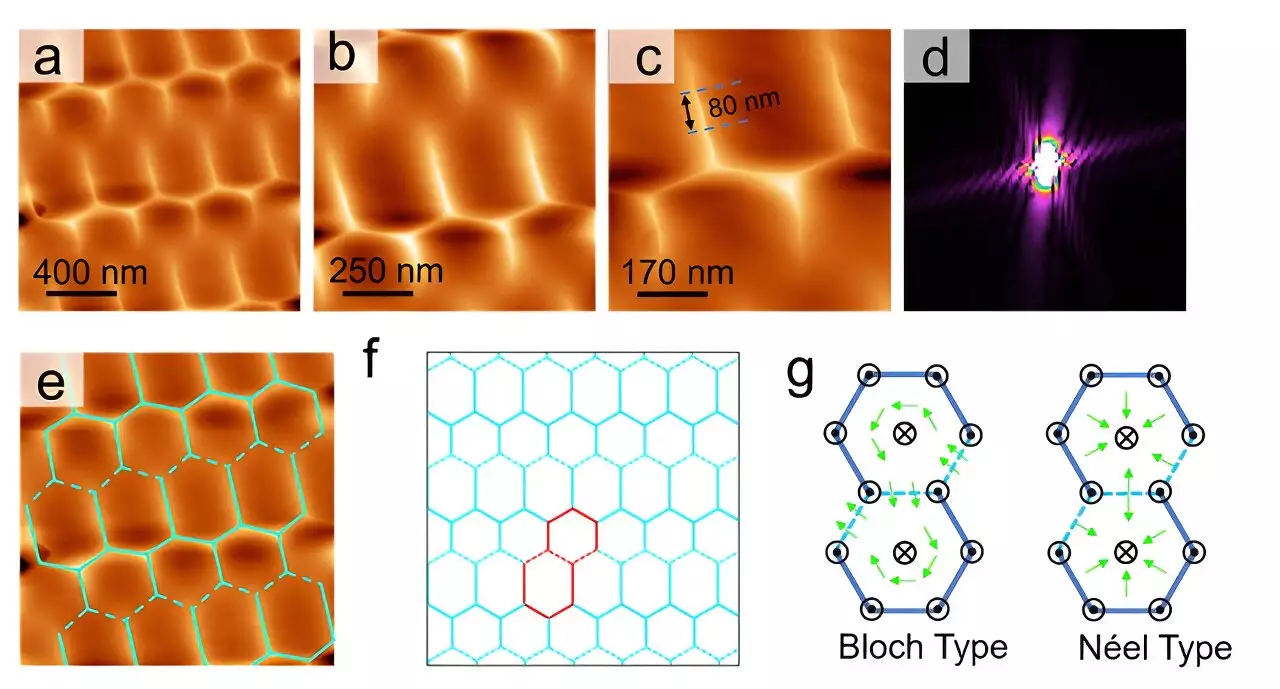Recent advancements in condensed matter physics have led to the groundbreaking observation of intrinsic magnetic structures within a kagome lattice by a collaborative research team from China. This discovery, which was facilitated by cutting-edge magnetic force microscopy (MFM) technology, along with electron paramagnetic resonance spectroscopy and rigorous micromagnetic simulations, has opened new avenues for scholarly exploration. Published in *Advanced Science* on August 19, this work underscores the inherent complexity and potential of kagome lattices, which are renowned for their unique properties, including Dirac points and flat bands. These attributes contribute to intriguing phenomena such as topological magnetism and unconventional superconductivity, making kagome lattices a focal point in addressing the enigmatic nature of high-temperature superconductivity and prospects for quantum computing.
Under the leadership of Professor Lu Qingyou from the Hefei Institutes of Physical Science, in conjunction with Professor Xiong Yimin at Anhui University, researchers identified a previously unexamined magnetic array within the binary kagome Fe3Sn2 single crystal. This notable finding was characterized by a distinct broken hexagonal symmetry, the result of interactions between the intrinsic hexagonal lattice structure and uniaxial magnetic anisotropy. This competition generated unique spin configurations that offer potential implications for both theoretical understanding and practical applications. The article also highlights the importance of Hall transport measurements, which reinforced the presence of these topologically broken spin patterns, showcasing the responsive nature of materials at the nano-scale.
As researchers continued to probe the magnetic behaviors of Fe3Sn2 single crystals, they uncovered that the magnetic reconstruction occurred via a second-order or weak first-order phase transition, which led to a significant re-evaluation of previous assumptions that deemed it a first-order transition. This finding provokes critical reflections on the established understanding of magnetic ground states, suggesting a shift from the anticipated spin-glass state to a new in-plane ferromagnetic state. The team’s revised magnetic phase diagram provides a clearer contextualization of these states, heralding fresh theoretical contemplations in the realm of magnetism.
The implications of these insights are profound, illuminating fresh perspectives on the interplay between electron behavior and lattice structures. The quantitative data from MFM demonstrated that notable out-of-plane magnetic components endure even at lower temperatures, shedding light on the stability of these magnetic states. Furthermore, by employing the Kane-Mele model to interpret the opening of the Dirac gap at diminished thermal conditions, the researchers effectively dispelled previous theories suggesting the presence of skyrmions under similar circumstances.
This pioneering study not only enhances our understanding of topological magnetic structures but also positions itself as a building block for future explorations in quantum computing and high-temperature superconductivity applications. By providing new dimensions to the existing literature, this work encourages further inquiry into the fascinating behavior of quantum materials, where insight into fundamental processes could lead to the technological innovations of tomorrow.

